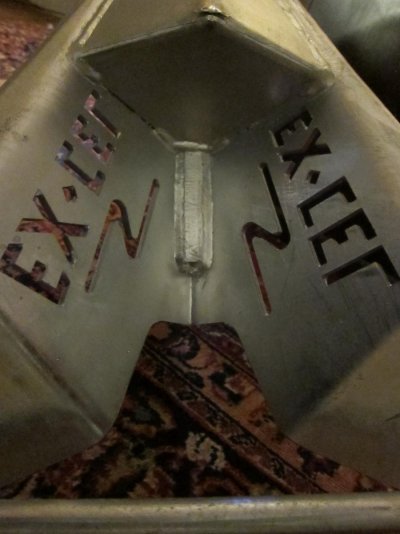My greatest concern for an anchor here in the San Francisco estuary is for it to stay set or reset reliably when tidal currents reverse, over maximum, uni-directional holding power. Tidal direction here can change 2 times overnight here with currents of 2 knots and more.
Mark--- The situation is the same in the PNW with anchorage currents that can be even stronger; 4 -6 knots in some places. The Bruce
IS an anchor that sets easily (in our experience), and I don't recall ever having a problem getting an intial set out of it although it did have to be dragged around a bit at times before it would dig in and grab.
Our complaint was solely with its low holding power under pressure. There are videos you can watch on the web that show how a Bruce/claw type anchor can get into a set-unset-skip, set-unset-skip routine across the bottom. In the videos I've seen the bottom was always sand. So maybe it won't do this in mud.
But as long as you're dealing with fairly firm bottoms like mud (but not soft mud) I would think a Bruce would do very well even in a relatively small size unless you put a lot of pressure on it.
I think a Danforth/Fortress would do even better in a bottom like what you have down there in terms of holding. As I've mentioned, our boat spent the first 25 years of its life in SFO Bay and judging from photos the previous owner sent us it also spent time in the delta and up the river(s). It had a large, heavy Danforth-type anchor on the bow and a slightly smaller (but still heavy) Danforth-type on the stern. The anchor on the bow had a slightly bent shank so it had obviously been subjected to considerable pressure at some point.
When we got the boat to Bellingham we replaced the bow anchor with the Bruce. We later got rid of the heavy stern anchor because its weight discouraged us from using it, but we replaced it with the same design, this time a Fortress.
The times we've used it--- and in some cases it ended up being subjected to a lot of pressure, most recently with a raft of seven boats hanging on it with the anchor deployed straight out from the side of our boat in a 20 knot wind--- it has done very, very well, particularly considering its initial set was accomplished simply by pulling on it by hand. All mud bottoms in these cases.
I don't know if you carry a stern anchor, but for your area I think a Fortress sized to be the main anchor for your boat-- in our case its the FX-23--- would be a good choice and an alternative to the Bruce should you ever experience setting or holding problems with that anchor. And a Fortress is very easy to carry on a swimstep mount, lashed upside down to a handrail, or stowed in a lazarette.







 :blush
:blush
